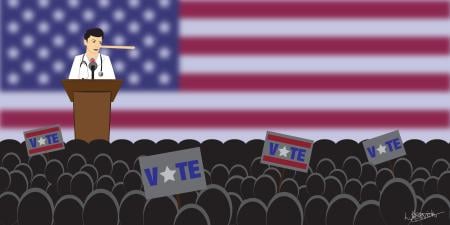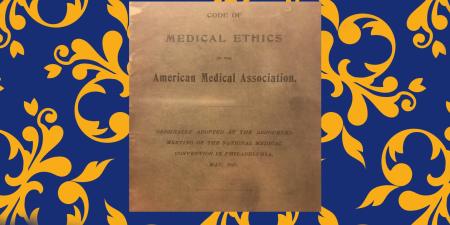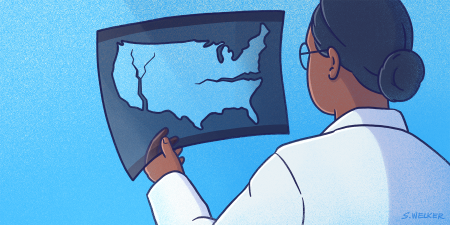Abstract
Under-resourced and fragmented public health infrastructure has contributed to a poor pandemic response in the United States. There have been calls to redesign the Centers for Disease Control and Prevention and to increase its budget. Lawmakers also have introduced bills aiming to change public health emergency powers at the local, state, and federal levels. Public health is ripe for reform, but reorganization and enhanced funding will not address an equally pressing problem: chronic failures of judgment in the definition and implementation of legal interventions. Without a more informed and nuanced appreciation for the value and limits of law as an instrument of health promotion, the public will remain at unnecessary risk.
Pandemic Failures
The US response to the COVID-19 pandemic has been poor by most measures. Despite many advantages, the United States has a higher COVID-19 death rate than any other wealthy country.1 This is dismaying but should not be surprising. Efforts to reverse—even just halt—obesity2 and fatal overdose3 in the United States remain similarly humbling failures; meanwhile, the prospects of an effective response to climate change are far from auspicious.
It is easy to blame lack of progress on political partisanship or characteristics of American culture and social media. But these are not readily modifiable factors and therefore remain, practically speaking, the conditions of public health work.4 Our Byzantine and impoverished public health infrastructure surely plays a role in public health failures. Since January 2020, state legislators have introduced more than 1500 more or less thoughtful bills to change the allocation and extent of public health authority,5 and many commentators continue to call for drastic reform in how the Centers for Disease Control and Prevention (CDC) is structured and operates.6,7,8 However, better funding and organization, while necessary, are far from sufficient for achieving greater and more equitable levels of health.
The key challenge in pandemic response and in public health generally is behavior change. Health agencies and their leaders are adept at identifying the etiology of harms and using epidemiology to estimate how resulting interventions could improve population-level outcomes. But when public health leaders “prescribe” those science-based interventions to the public in the form of rules, regulations, and guidance, they are surprised to encounter widespread noncompliance and even resistance. This should be frustratingly familiar to physicians, whose patients’ medication adherence hovers between 30% and 50%.9
To be sure, bad politicians and fake news influence compliance with public health rules and guidelines in ways one doesn’t see in medicine. But the fundamental threats to effective legal intervention are analogous in population terms to some of the challenges to medication adherence identified by the American Medical Association: fear, cost, misunderstanding, too many medications (and instructions), lack of symptoms, mistrust, worry, and depression.10
Overcoming the public health version of these challenges requires leaders to recognize that mass behavior change is itself a huge job that is illuminated by work in many scientific disciplines. Success is not merely or even mostly a function of better communication.11 Equally or more important is accounting for available knowledge about social context and social psychology in the design and implementation of legal rules.
Making Better Use of Law
Law has long been one of public health’s best tools.12 Deployed effectively, laws can make environments healthier and instigate healthier behavior. Along with the “hard” power of formal rules, legal authority can also be wielded “softly” through mechanisms that structure choices (eg, make organ donation opt-out), provide incentives (eg, tax unhealthy products), and act to educate targets about healthy behavior and conditions (eg, require nutritional labeling on menus and packaging).13
Getting laws—all of which should be considered in terms of their health effects—right requires collaboration between 3 groups.
Biomedical researchers. Bench scientists and applied epidemiologists are needed to identify ways to disrupt mechanisms that cause harm. In the pandemic, for example, they identified the value of limiting indoor activity in densely congested areas.
Social scientists. Social scientists are needed to determine, through socio-ecological analysis, how rules can facilitate behavior change. For indoor density restrictions, that would mean first understanding the social, economic, and cultural value of different indoor activities. Social scientists would assess norms and logistical constraints likely to frustrate compliance, such as the predictable difficulties relating to church and school attendance, and offer practical advice about implementation considerations. The social scientist group would also include historians who could describe noncompliance observed in analogous events like the Great Influenza of 1918 to 1920,14 as well as sociological researchers who would appreciate, at the outset, that issuing an order of any type does not ipso facto produce the desired behavior and who would bring useful evidence and theory to bear on the problem of compliance.15 Compliance with law, the serious scientific study of which goes back at least as far as sociologists Max Weber and Émile Durkheim, is known to depend on factors like legitimacy of the law giver, perceptions of the law’s fairness, peer beliefs and behaviors, conformity with existing norms and habits, and the likelihood of disobedience being detected.16 And, of course, people actually have to know what the law is and have the resources necessary for compliance, conditions that are often not met and are often tied to inequities. Resources here doesn’t just include the masks people need to follow a masking rule but cognitive resources as well: people can only follow so many rules at any one time.17 Perceptions of risk are also important, pointing to the necessity of not just designing but implementing rules with an understanding of how cognitive bias and social conditions influence compliance.
Physicians have essential roles to play in public health but are perhaps overrepresented in leadership.
The sociological researchers would know that context also matters in other ways. Even when law “works,” (ie, changes behavior) it doesn’t do so completely or permanently. Laws, like antibiotics, may lose efficacy with over- and misuse, suggesting a need to steward legal authority. Like pills, laws also often have side effects, the costs of which must be carefully weighed against therapeutic benefit. For example, laws can increase bike helmet use but also expose Black people to racialized overpolicing.18
Lawyers. The third essential group would be experts on the legal authority of government. This group knows how to write clear rules and would be able to advise on whether and how long courts would uphold restrictions. This group would know that the protection of speech—and especially religion—has been elevated in recent decades and that epidemiologists would need to have specific evidence in hand establishing the indispensability of any differential treatment of religious and secular entities.
All 3 groups—biomedical researchers, social scientists, and lawyers—would need to work together to address trade-offs that are narrow—such as whether closing malls forces people into other less spacious settings—and broad—such as whether restrictions on churches would create spillover antagonism for vaccination recommendations. In a crisis like the COVID-19 pandemic, for which it was predictable from the start that vaccine hesitancy would be a major challenge, discussions would be situated in an ongoing planning process focused on immediate and longer-term needs.
Shortcomings of US Pandemic Responses
Unfortunately, use of both hard and soft legal authority during the pandemic was poor. This resulted not from a lack of available knowledge and evidence about behavior change through law but from a lack of serious attention to the problem by public health policy makers. Some mistakes were understandable, given the scale and uncertainty of the crisis. But many didn’t emerge from the difficult features of the pandemic and in fact exhibited the same deficiencies that have plagued the response to other public health threats. For example, restrictions on travel over state lines exhibited many of the flawed assumptions about enforcement capacity and the harmful theatricality we observe in the War on Drugs. In their treatment of religious activity, state health leaders created rules likely to activate cultural suspicions about government overreach while providing nearly ideal opportunities for First Amendment challenges, which largely succeeded.
Instead of stewarding the credibility needed for compliance with legal rules and recommendations, federal, state, and local governments were caught up in an understandable—but ultimately avoidable—game of whack-a-mole, issuing over 1000 emergency laws in just the first 6 months of the pandemic.19 Many of these pandemic laws, such as the CDC’s 2021 mask guidance, were overly complex.20 Failing to appreciate the harmful externalities of arbitrary rules, public health leaders created restrictions with strange inconsistencies, such as prohibiting outdoor gatherings while allowing restaurants to operate.21 Extensive study of prior epidemics had established that the best overall strategy was targeted layered containment (ie, application of multiple partially effective measures), but in the constant and enduring rush to act quickly, specific tactics (like mask mandates and density restrictions) were not carefully targeted and therefore could not be sustainably layered.4, 22
Better Leadership and Inclusion
Public health in the United States will not improve if its deficiencies are attributed wholly to resources and legal infrastructure—let alone if those in the field blame politicians, people mistrustful of vaccines, social media, and news media. We have used the example of law, one of public health’s most important tools, to highlight the need to change the culture and leadership of public health. Here, we offer a few recommendations and observations to facilitate this change.
The first recommendation is to adopt a transdisciplinary model of public health from the first day of professional training for all public health workers. This model entails embracing a much wider array of disciplines in decision making about behavior change and policy.23 Physicians have essential roles to play in public health but are perhaps overrepresented in leadership, as medical training is legally required to head many federal, state, and local health agencies or has been the assumed or customary qualification.24 Every director of the CDC since 1953 has been a physician,25 as have all but one US Food and Drug Administration commissioner since 1980.26 Over two-thirds of state health officers have medical training27; the last 32 commissioners of health in New York City have been physicians.28 But jobs in public health leadership come with formal legal responsibilities and powers, and physicians in official and unofficial capacities also implement and explain legal responses issued by legislatures and executive branches. Without change in their understanding of and capacity to wield law, there is as little hope of addressing overdose and obesity as there was in preventing widespread transmission of and harm from COVID-19. It is past time to bring anthropologists, economists, political scientists, and others more fully into decision making about how to use law and other mechanisms of behavior change.
It is also important that knowledge and power be shared not only among a wider array of professionals but also with the people. Sharing knowledge and power is not easy, nor is it a panacea. Sometimes people will latch onto a problematic idea (eg, “masks don’t work”) that is difficult to change. Sometimes people don’t trust health authorities or have different priorities or more pressing concerns. Awareness of these views and the motivations and assumptions underlying them, however, can inform whether and how a law would actually have its desired effect and what side effects need to be considered. More transparent policy making can promote public trust. As in medicine, there is still much to learn about how to do this widely and well.29
Culture might be a good place to end. It has been hard to miss an immodesty in public health leaders who are clinicians, which tracks with long-standing concerns that physicians have “some blind spots and unhealthy norms,” including “assum[ing] the role of a hero” and implying that “to err is human, but … [they] are superhuman.”30 People speak grandly of “following the science” when what they actually follow is a narrow epidemiological slice of available knowledge about human health behavior. Growing recognition of the essential value of humility in patient care31 should extend to those working in public health leadership as well. Diversity of thought, humility, transparency, and sharing of power are all elements of more effective practice of public health leadership.
References
-
Mueller B, Lutz E. US has far higher covid death rate than other wealthy countries. New York Times. February 1, 2022. Accessed October 14, 2022. https://www.nytimes.com/interactive/2022/02/01/science/covid-deaths-united-states.html
-
Fryar CD, Carroll MD, Afful J; National Center for Health Statistics. Prevalence of overweight, obesity, and severe obesity among adults aged 20 and over: United States, 1960-1962 through 2017-2018. Centers for Disease Control and Prevention. Updated January 29, 2021. Accessed October 14, 2022. https://www.cdc.gov/nchs/data/hestat/obesity-adult-17-18/obesity-adult.htm
-
Ahmad FB, Cisewski JA, Rossen LM, Sutton P. Provisional drug overdose death counts. Centers for Disease Control and Prevention. February 9, 2022. Accessed October 14, 2022. https://www.cdc.gov/nchs/nvss/vsrr/drug-overdose-data.htm
-
Anderson ED, Burris SC. Imagining a better public health (law) response to COVID-19. Univ Richmond Law Rev. 2022;56:955-1005.
-
Platt E, Moran-McCabe K, Cook A, Burris S. Trends in US state public health emergency laws, 2021-2022. AM J Public Health. Forthcoming 2023.
-
Interlandi J. Can the CDC be fixed? New York Times. June 16, 2021. Accessed September 2, 2022. https://www.nytimes.com/2021/06/16/magazine/cdc-covid-response.html 7
-
Gostin LO, Galea S. Reforming and strengthening the Centers for Disease Control and Prevention: five key reforms to renew the agency’s stature and effectiveness. Milbank Q Opinion. November 30, 2020. Accessed September 2, 2022. https://www.milbank.org/quarterly/opinions/reforming-and-strengthening-the-centers-for-disease-control-and-prevention-five-key-reforms-to-renew-the-agencys-stature-and-effectiveness/
-
Rabin RC. The CDC will undergo a comprehensive re-evaluation, the agency’s director said. New York Times. April 4, 2022. Accessed September 2, 2022. https://www.nytimes.com/2022/04/04/health/cdc-re-evaluation-covid.html
- Osterberg L, Blaschke T. Adherence to medication. New Engl J Med. 2005;353(5):487-497.
-
8 reasons patients don’t take their medications. American Medical Association. December 2, 2020. Accessed August 19, 2022. https://www.ama-assn.org/delivering-care/patient-support-advocacy/8-reasons-patients-dont-take-their-medications
- Kronish IM, Moise N. In search of a “magic pill” for medication nonadherence. JAMA. 2017;177(5):631-632.
- Burris S, Anderson ED. Legal regulation of health-related behavior: a half century of public health law research. Annu Rev Law Soc Sci. 2013;9(1):95-117.
- Thaler RH, Sunstein CR. Libertarian paternalism. Am Econ Rev. 2003;93(2):175-179.
-
Hauser C. The mask slackers of 1918. New York Times. August 3, 2020. Accessed September 2, 2022. https://www.nytimes.com/2020/08/03/us/mask-protests-1918.html
- Greenhalgh T. Miasmas, mental models and preventive public health: some philosophical reflections on science in the COVID-19 pandemic. Interface Focus. 2021;11(6):1-8.
-
Tyler TR. Why People Obey the Law. Yale University Press; 1990.
-
van Rooij B, Fine A. The Behavioral Code: The Hidden Ways the Law Makes Us Better … or Worse. Beacon Press; 2021.
-
Kroman D. King County repeals mandatory bicycle helmet law. Seattle Times. February 17, 2022. Accessed September 2, 2022. https://www.seattletimes.com/seattle-news/transportation/king-county-repeals-mandatory-bicycle-helmet-law/
-
Cloud LK, Moran-McCabe K, Platt E, Prood N. A chronological overview of the federal, state, and local response to COVID-19. In: Burris S, de Guia S, Gable L, Levin DE, Parmet WE, Terry NP. Assessing Legal Responses to COVID-19. Public Health Law Watch; 2020:10-19. Accessed August 15, 2022. https://static1.squarespace.com/static/5956e16e6b8f5b8c45f1c216/t/5f4d6578225705285562d0f0/1598908033901/COVID19PolicyPlaybook_Aug2020+Full.pdf
-
Tufekci Z. The CDC is still repeating its mistakes: the agency’s new guidelines are too timid and too complicated. Atlantic. April 28, 2021. Accessed October 19, 2022. https://www.theatlantic.com/health/archive/2021/04/cdc-outdoor-mask-pandemic/618739/
-
Scott PB. Addendum 8 to amended and restated Executive Order 01-20. Office of Governor Phil Scott, State of Vermont. November 20, 2020. Accessed October 19, 2022. https://governor.vermont.gov/sites/scott/files/documents/ADDENDUM%208%20TO%20AMENDED%20AND%20RESTATED%20EXECUTIVE%20ORDER%2001-20_0.pdf
-
Gottlieb S. Uncontrolled Spread: Why Covid-19 Crushed Us and How We Can Defeat the Next Pandemic. HarperCollins; 2021.
- Burris S, Ashe M, Levin D, Penn M, Larkin M. A transdisciplinary approach to public health law: the emerging practice of legal epidemiology. Annu Rev Public Health. 2016;37(1):135-148.
-
Coles E. The US deserves the best public health doctors. They needn’t be medical doctors. STAT. October 13, 2021. Accessed October 14, 2022. https://www.statnews.com/2021/10/13/improve-public-health-remove-medical-doctor-requirement/
-
Past CDC directors/administrators. Centers for Disease Control and Prevention. Updated January 20, 2021. Accessed May 1, 2022. https://www.cdc.gov/about/history/pastdirectors.htm
-
Commissioners. US Food and Drug Administration. Updated March 10, 2022. Accessed May 1, 2022. https://www.fda.gov/about-fda/fda-leadership-1907-today/commissioners
-
ASTHO member directory. Association of State and Territorial Health Officers. Accessed August 15, 2022. https://www.astho.org/members/member-directory/
-
Ashwin Vasan, MD, PhD. New York City Department of Health and Mental Hygiene. Accessed October 14, 2022. https://www1.nyc.gov/site/doh/about/about-doh/the-commissioner.page
-
Santhirapala R, Fleisher LA, Grocott MPW. Choosing Wisely: just because we can, does it mean we should? Br J Anaesth. 2019;122(3):306-310.
- Shanafelt TD, Schein E, Minor LB, Trockel M, Schein P, Kirch D. Healing the professional culture of medicine. Mayo Clin Proc. 2019;94(8):1556-1566.
-
Wadhwa A, Mahant S. Humility in medical practice: a qualitative study of peer-nominated excellent clinicians. BMC Med Educ. 2022;22(1):88.



